China is not a religious country, but religions exist everywhere in China. From the last century, Western missionaries came to China and brought Christianity. Churches were built accordingly. This post will bring you 10 beautiful churches in China.
1. St. Sophia Church
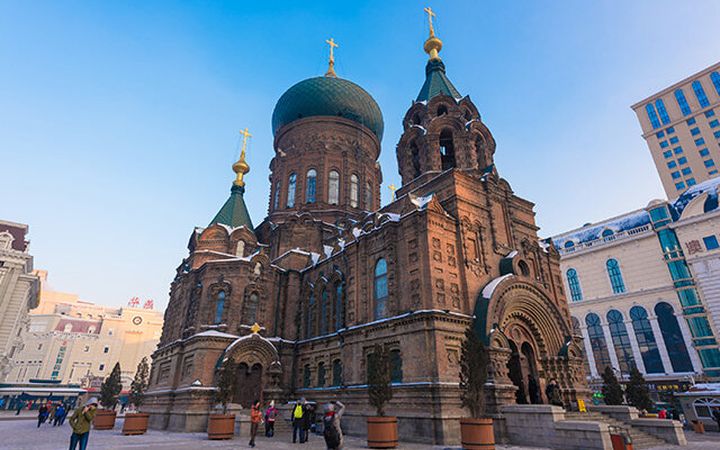
Address: No. 88, Toulong Street, Daoli District, Harbin City, Heilongjiang Province
2. Guangzhou Shishi Sacred Heart Cathedral
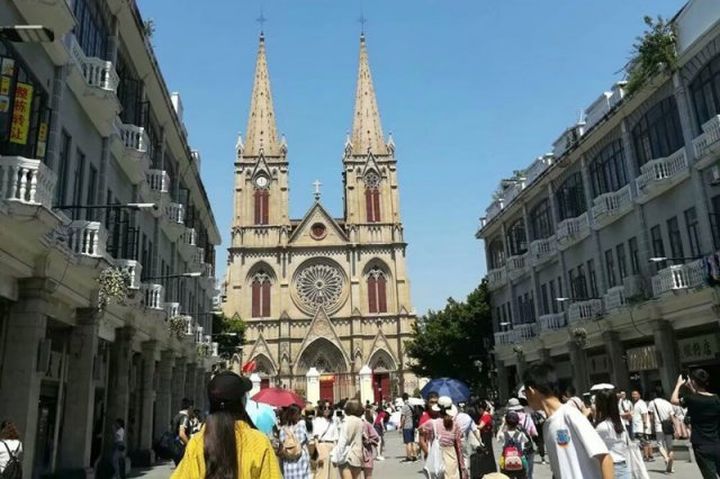
Address: No. 56, Yide Road, Yuexiu District, Guangzhou City, Guangdong Province
3. Hongjialou Catholic Church
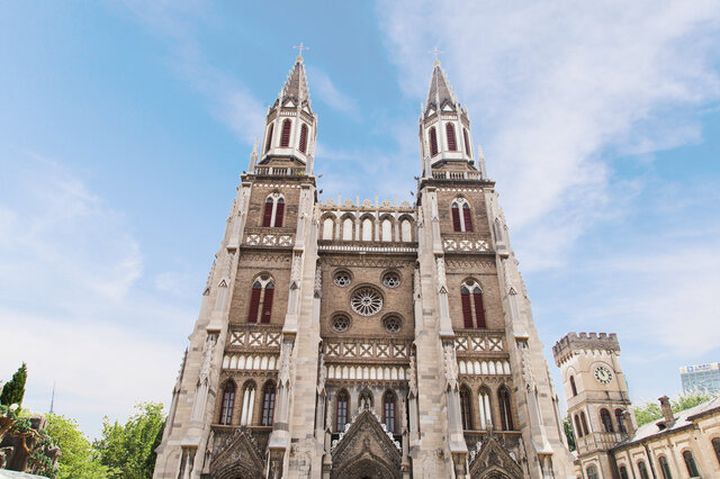
Address: No. 1 Hongjialou, Licheng District, Jinan City, Shandong Province
4. Wangfujing Church
Wangfujing Catholic Church, commonly known as Dongtang, also known as Wangfujing Catholic Church, St. Joseph Church, and Bamiancao Church, is located at No. 74 Wangfujing Street, Dongcheng District, Beijing. It was built in 1655. The second church built after Xuanwumen Catholic Church is also one of the four major Catholic churches in Beijing. It is now the seventh batch of national cultural relics protection units. The existing church building of Wangfujing Catholic Church is a three-story Roman-style building. The whole building is a brick-wood structure with gray brick clear water walls. It incorporates the characteristics of traditional Chinese architecture in the Western classical style. In 2000, along with the reconstruction of Wangfujing Street, the Beijing municipal government invested in the construction of a square in front of the church, thus making Wangfujing Catholic Church a landscape of Wangfujing Pedestrian Street, and Wangfujing Catholic Church has therefore become the most well-known place in Beijing. A catholic church.
Address: No. 74, Wangfujing Street, Dongcheng District, Beijing
5. Xishiku Church
The most beautiful church in China, Xishiku Catholic Church in Beijing, formerly known as the Church of the Savior, commonly known as Beitang, is located at No. 33, Xishiku Street, Xicheng District, Beijing. It was first built during the Kangxi period of the Qing Dynasty. It was relocated and newly built in the Xishiku area, and is now the sixth batch of national key cultural relics protection units. The North Church is a church with a combination of Chinese and Western walls. The main building is a three-story Gothic building with 11 spiers at the top. 31 meters tall and light, the building is tall and light, with mosaic paintings and stained glass paintings inside, and tall windows, which look brilliant and mysterious; there is a stele pavilion on the left and right sides of the front of the hall, which is designed for the top of the mountain with yellow glazed tiles and double eaves. Emperor Qianlong’s handwritten imperial stele has two lines, and inside the stele pavilion are four Chinese-style stone lions, which belong to the most traditional Chinese style. It can be said that Chinese and Western styles have achieved peaceful coexistence here.
Address: No. 33, Xishiku Street, Xicheng District, Beijing
6. Xujiahui Catholic Church
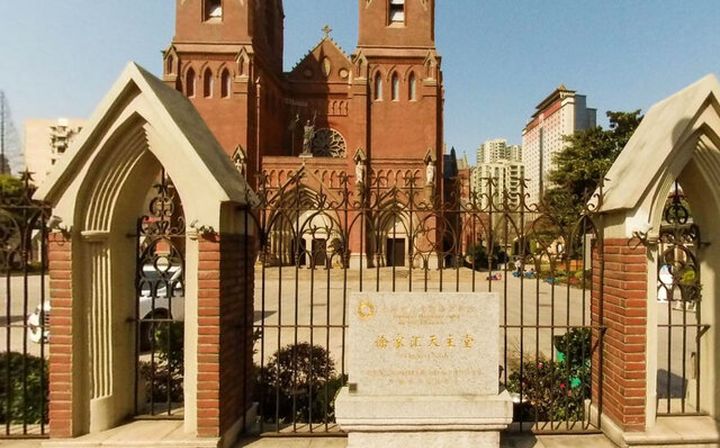
Address: No. 158, Puxi Road, Xuhui District, Shanghai
7. Nanguan Catholic Church
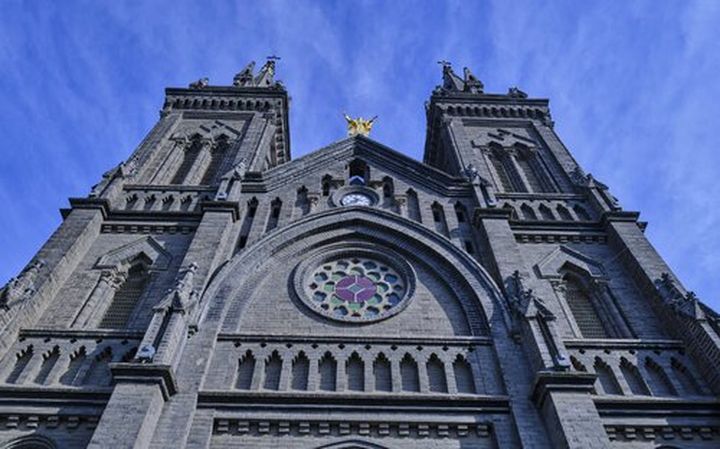
Address: No. 40, Lejiao Road, Shenhe District, Shenyang City, Liaoning Province
8. St. Alekseev Church
St. Alekseev’s Church is located in Nangang District, Harbin City, Heilongjiang Province. The locals call it the Innovation Cathedral because it is located at the intersection of Gogol Street and Innovation Street. The church was built in 1931. It is a typical Russian-style building. It is an Orthodox church with a construction area of 1,005 square meters. It was restored in 1980 and changed to a Catholic church, also known as the Church of the Immaculate Conception. The reform cathedral is in Baroque style, with a brick and wood structure, a cross-shaped symmetrical layout on the plane, and a west-facing main entrance; the building has a tall and unique appearance, complex shapes, rich lines and corners on the walls, red and white, the bell tower is a tent top, and the dome above the main entrance On the other hand, the traditional Russian onion style is adopted. The whole appearance is full of changes, and different styles are blended and harmonious, forming a lively combination. Although this church is not as famous as the Hagia Sophia, its red exterior walls, unique onion roofs and Baroque towers are another taste compared with the latter.
Address: No. 47, Shike Street, Nangang District, Harbin City, Heilongjiang Province
9. Fuzhou Fanchuanpu Church
Fanchuanpu Catholic Church, also known as Fanchuanpu Catholic Church and Fuzhou Fanchuanpu Church, is located on Nantai Island, Cangshan District, Fuzhou City. It was first built in 1864 and rebuilt in 1933. It covers an area of 8400 square meters, with a construction area of 1253.7 square meters. It is a mixture of Gothic and French (Roman) styles, and is a provincial-level cultural relic protection unit in Fujian. The church is of brick and wood structure, and the outer wall is made of blue bricks; the overall body of the church is cross-shaped, with a pair of arc-shaped ear chambers on both sides, and the interior of the church is a basilica-style three-corridor layout. The original height of the tower was 36 meters, and it was equipped with a large clock imported from France. The lighting windows on the top are inlaid with multicolored glass, and the three sets of lighting glass on the sides of the small altars on the left and right sides are each carved with a colorful church saint. The church faces north and faces the Minjiang River. It is magnificent and is still the largest Catholic church in Fujian Province.
Address: No. 54, Xinmin Street, Cangshan District, Fuzhou City, Fujian Province
10. Sheshan Notre Dame Cathedral
Sheshan Notre Dame Cathedral is located on Sheshan, Songjiang District, hence the name. It is also known as Sheshan Catholic Church, Sheshan Catholic Church, Far East Notre Dame Basilica, and Sheshan Notre Dame Basilica of Christian Blessing. . Shanghai Sheshan Catholic Church actually consists of two buildings, the Zhongshan Church and the Peak Hall. It is the most spectacular church in China. The Zhongshan Church was built in 1894, the foundation stone was laid in 1925 for the lobby on the top of the mountain, and it was officially completed in 1935. The designer of the mountaintop lobby is Ye Zhaochang, a Portuguese Jesuit, and the building has a Roman transitional style. The bell tower is 38 meters high, the ridge of the hall is 17 meters high, the east-west length is 56 meters, and the widest part is 25 places, which can accommodate more than 3,000 people. On the dome at the top is a bronze statue of the Virgin entrusting Jesus. Zhongshan Church has “Three Sacred Pavilions” including the Notre Dame Pavilion, the Sacred Heart Pavilion and the Joseph Pavilion. There are 14 statues of the Crucifixion between the Zhongshan Church and the lobby on the top of the mountain.
Address: Sheshan, Songjiang District, Shanghai